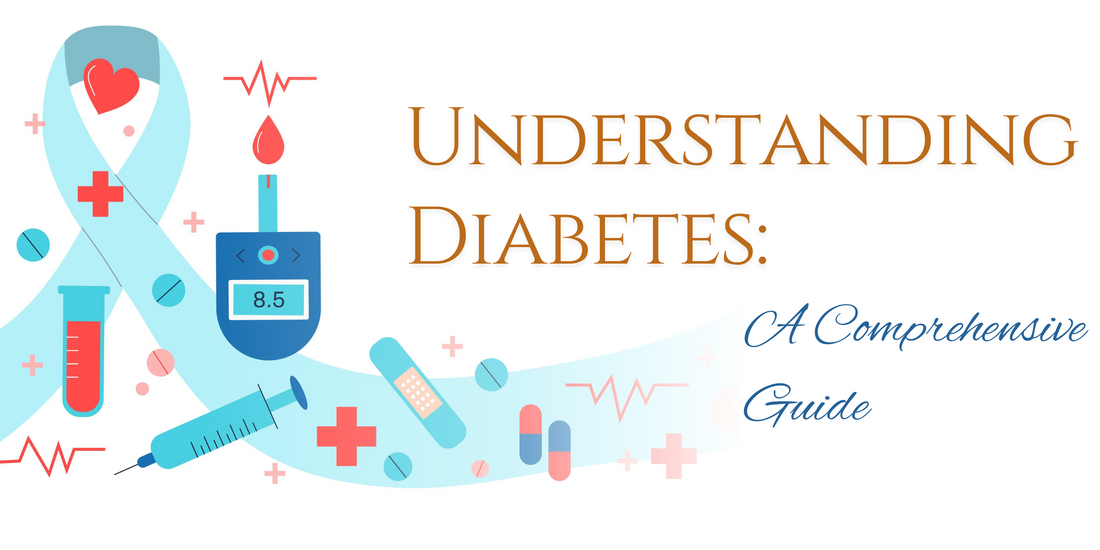
Understanding Diabetes: A Comprehensive Guide
Million's SmileShare
Diabetes is a chronic health condition that affects millions of people worldwide. It involves problems with the hormone insulin, which regulates blood sugar levels. This blog provides a comprehensive overview of diabetes, including its types, causes, symptoms, and diagnosis. By understanding diabetes better, you can take steps to manage it effectively and improve your quality of life.
What is Diabetes?
Diabetes is a metabolic disorder characterized by high blood sugar levels. It occurs when the body cannot produce enough insulin or use it effectively. Insulin is a hormone produced by the pancreas that helps cells absorb glucose from the bloodstream for energy. Without adequate insulin, glucose builds up in the blood, leading to various health issues.
Types of Diabetes
-
Type 1 Diabetes: This form of diabetes is an autoimmune condition where the body’s immune system attacks and destroys the insulin-producing cells in the pancreas. Type 1 diabetes usually develops in children and young adults, though it can occur at any age. People with Type 1 diabetes require insulin injections or an insulin pump to manage their blood sugar levels.
-
Type 2 Diabetes: Type 2 diabetes is the most common form of diabetes, accounting for about 90% of cases. It typically develops in adults over the age of 45, but increasing numbers of younger people are being diagnosed. In Type 2 diabetes, the body becomes resistant to insulin or doesn’t produce enough insulin. Lifestyle changes, oral medications, and sometimes insulin injections are used to manage Type 2 diabetes.
-
Gestational Diabetes: This type of diabetes occurs during pregnancy and usually disappears after childbirth. However, women who have had gestational diabetes are at higher risk of developing Type 2 diabetes later in life. Gestational diabetes can be managed with diet, exercise, and, if necessary, medication.
Causes of Diabetes
The causes of diabetes vary depending on the type:
-
Type 1 Diabetes: The exact cause is unknown, but it is believed to involve a combination of genetic and environmental factors. An autoimmune response is responsible for the destruction of insulin-producing cells.
-
Type 2 Diabetes: Several risk factors contribute to Type 2 diabetes, including genetics, obesity, physical inactivity, poor diet, and age. Insulin resistance develops over time due to these factors.
-
Gestational Diabetes: Hormonal changes during pregnancy can affect insulin function, leading to gestational diabetes. Risk factors include obesity, a family history of diabetes, and being over the age of 25.
Symptoms of Diabetes
The symptoms of diabetes can vary depending on the type and how well the condition is managed. Common symptoms include:
- Frequent urination
- Excessive thirst
- Unexplained weight loss
- Fatigue
- Blurred vision
- Slow-healing wounds
- Increased hunger
Diagnosis of Diabetes
Diagnosing diabetes involves several tests:
- Fasting Plasma Glucose Test: Measures blood sugar levels after an overnight fast.
- Oral Glucose Tolerance Test (OGTT): Measures blood sugar levels after consuming a sugary drink and fasting overnight.
- Hemoglobin A1c Test: Provides an average blood sugar level over the past 2-3 months.
- Random Plasma Glucose Test: Measures blood sugar levels at any time of the day, regardless of food intake.
A diagnosis is confirmed if blood sugar levels are consistently above normal ranges.
Conclusion
Understanding diabetes is the first step toward effective management. Whether you have Type 1, Type 2, or gestational diabetes, knowing the type, causes, symptoms, and diagnostic methods helps in better managing the condition and improving overall health. Regular check-ups, a healthy diet, physical activity, and adherence to prescribed treatments are essential for managing diabetes and leading a fulfilling life.
If you suspect you have diabetes or are at risk, consult with a healthcare professional for proper diagnosis and management. Early intervention can make a significant difference in managing diabetes effectively and preventing complications.
